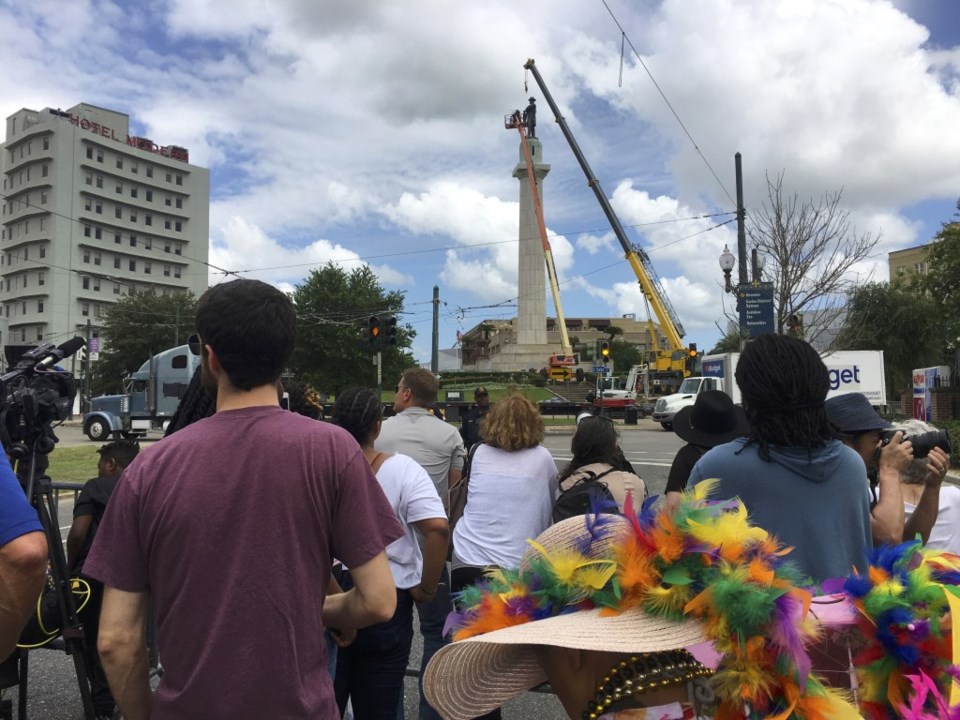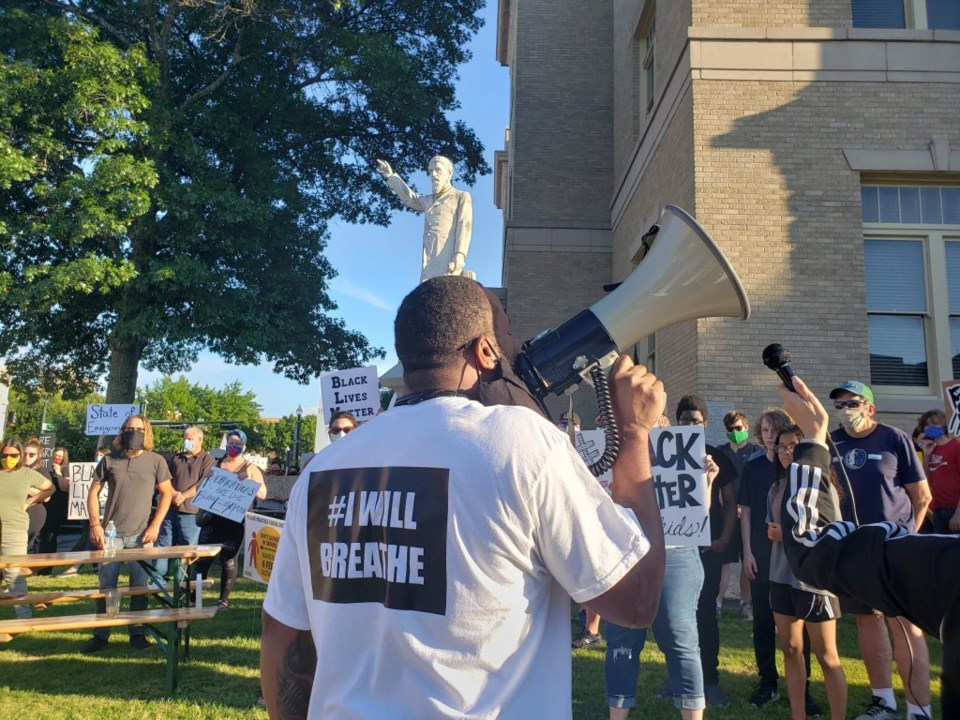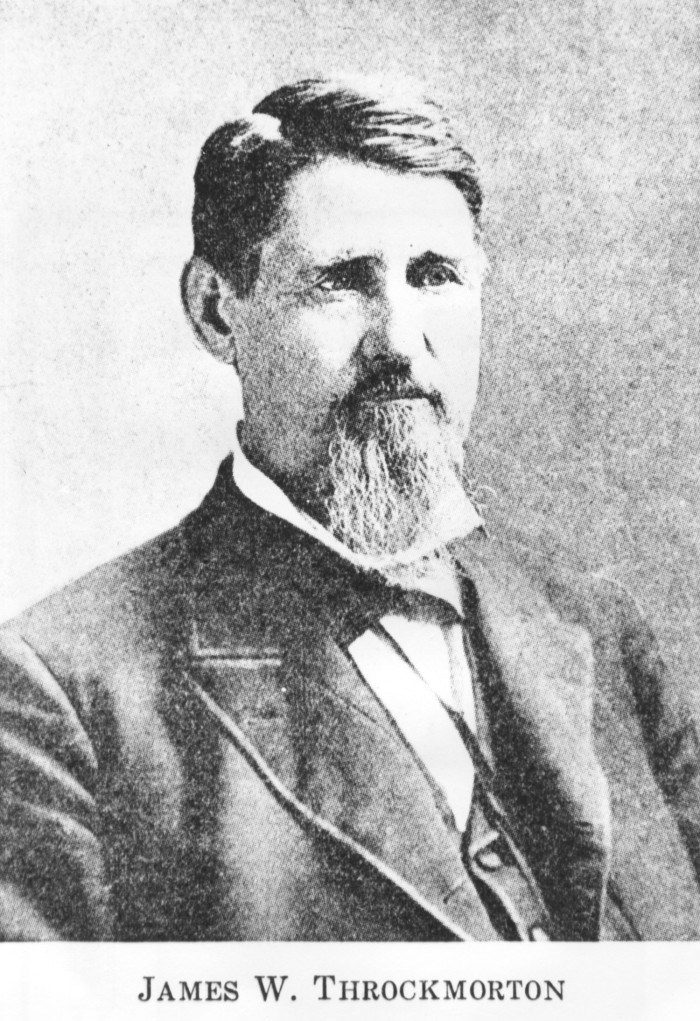Just after hearing presentations from board members on the fate of the James W. Throckmorton statue in downtown McKinney, council member La’Shadion Shemwell called Tuesday night's city council meeting a sham when he realized the vote to remove it would be delayed until after his recall election.
“Nobody’s minds are being changed,” Shemwell said. “You all know very well what you’re going to vote.”
The statue of Throckmorton has been a figure of controversy for weeks now. Since August, not one city council meeting has passed without a citizen or two speaking about it. Its place, both in history and physically, is a question worth a thoughtful answer, so the council formed an ad hoc advisory board in September to research both the man and the monument and present their findings.
They came before the council Tuesday night and presented two differing opinions on what the council should do.
Board member Justin Beller was the first to speak. Beller and half of the board, weighed the events of Throckmorton’s life and found him lacking, not just because of his service as a Confederate brigadier general or his ownership of an enslaved person but also because he established Black codes that later led to Jim Crow laws and was such an “impediment” to ratifying the 14th and 15th amendments that he had to be removed from office.
Speaking of Throckmorton's short career as governor, Beller said that Throckmorton "set the vision for the country when ex-Confederates gained power, leading to segregation and disenfranchisement across the county.” It was not just about Throckmorton’s beliefs, he added. It was about what he and his statue stood for.
He refuted claims that McKinney’s monument is not Confederate in nature. In fact, the Collin County branch of the United Confederate Veterans was called the "Throckmorton camp" after the former governor's death. The Throckmorton camp established a committee to raise funds for the statue to be built.
While the statue is listed as donated by the Federation of Women's Club, he also pointed out that it was very intertwined with the Daughters of the Confederacy, an organization he said had "led a charge to erect Confederate monuments in city centers and courthouse lawns to celebrate Confederacy and its ideals." The local Federation of Women's Club president at the time had been an officer in both groups.
He recommended the statue be moved two blocks away to the Collin County History Museum. He claimed doing so would protect the statue from vandalism and the community from the division it has created. It also allows for context and education to be provided, he said.
“Our Confederate was a man who made good decisions and bad decisions," Beller said. "But the monument had the same intention and purpose as others in the south.”

Judge Nathan White spoke next and recommended the statue be allowed to remain.
“Calling it a Confederate monument does not make it so,” he said. “You can examine it, read the text, and you’ll find nothing about it that suggests a connection with Confederacy. It is not a Confederate monument.”
The Southern Poverty Law Center, he added, does not list it as a Confederate monument. He called it “conspicuously absent” from their list. Further, the statue of Throckmorton is not in military dress but civilian clothes, which White said is not intimidating.
Those who want it removed, he said, want it “hidden from public view, out of sight out of mind, not contributing to the historic main square.”
He is also not convinced that it is the divisive object that others have suggested. Last time he went to the square, he said, it was crowded. “The statue was not a deterrent to crowds.”
Judge White then compared the Confederate veterans to Vietnam veterans. Though he is a proud veteran of the Vietnam war, he said he was aware that it was not “a popular war.” One day, the loved ones of the soldiers who fought with him will be gone.
“None will be left to remember and mourn them," he said. "What will become of those memorials? Will they be relocated? If future generations take position if the cause was not perfect, the people are not perfect, and new times call for new thoughts, isn’t that a logical future?”

After the board's presentation, the council was ready to move on. But Shemwell was not. He was angry that due to a change on the agenda, he was unaware that they were not voting on the statue’s future. He accused the mayor of purposely waiting until after Shemwell’s recall election Nov. 3 so that he cannot vote on it.
"What you are trying to do is kick this can down the road so that the only black council member on here is not on here when you cast your vote," he said.
Mayor George Fuller told him that he was "spouting nonsense" and claimed that Shemwell comes to council with an agenda. Fuller then accused him of lying about being racially profiled by a McKinney police officer in a traffic stop and said that if Shemwell was angry about the statue vote being so close to his recall election, it was his own fault.
Shemwell claimed he has known about the statue for years but never brought it to the floor.
“If you knew five years ago and avoided the square because of it and never brought it to me, shame on you,” Fuller said.
“Your truth and my truth are totally different,” Shemwell replied. He accused Fuller of being at the heart of the plot to recall him. “You still haven’t apologized. This city refuses to say Councilman Shemwell was speaking truth.”
To which Fuller replied: “If you’re waiting for an apology, you’ll never get it.”
But perhaps the most important moment came during public comments when a woman came forward. She said that it was Domestic Violence Awareness month and introduced herself as a friend of one of Shemwell's ex-girlfriends.
Shemwell, she said, should not present himself as a protector of Black people. She claimed that she has borne witness to his abuse and to him calling her friends' accusations lies and fake news.
"Show yourself for who you truly are," she said. "You are a man who beats Black women."
When Shemwell was allowed to respond, he didn't address the friend of his ex-girlfriend. Instead, he pointed to the good he had done on council and that in three and a half years, they had hired 41 percent minorities.
"You don't have to like me," he said, "but you'll respect the work I put in and do in this community."




